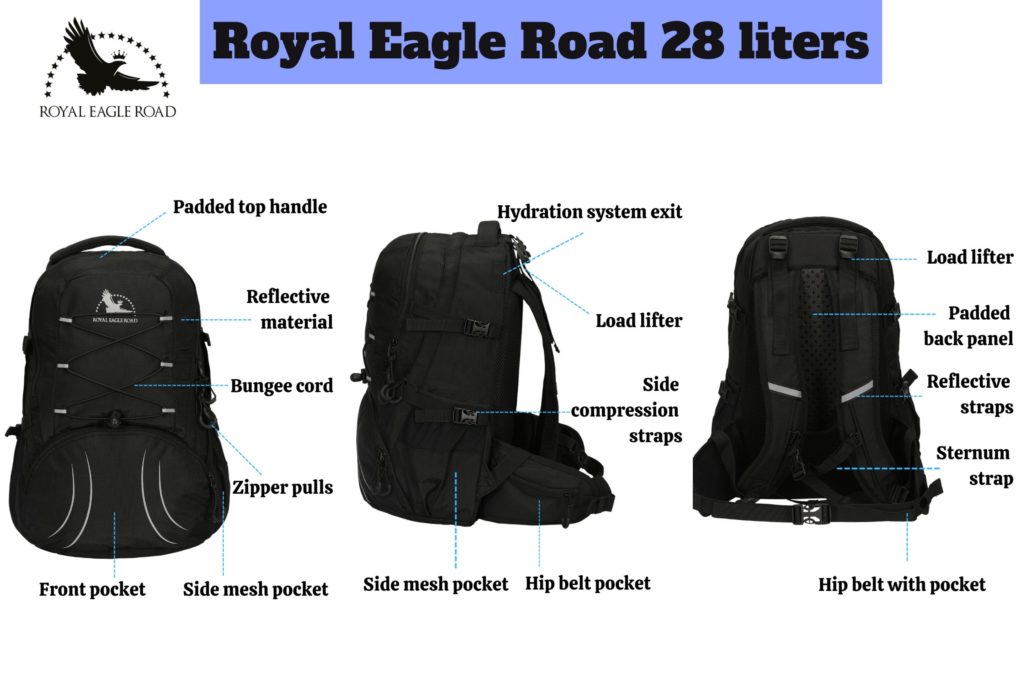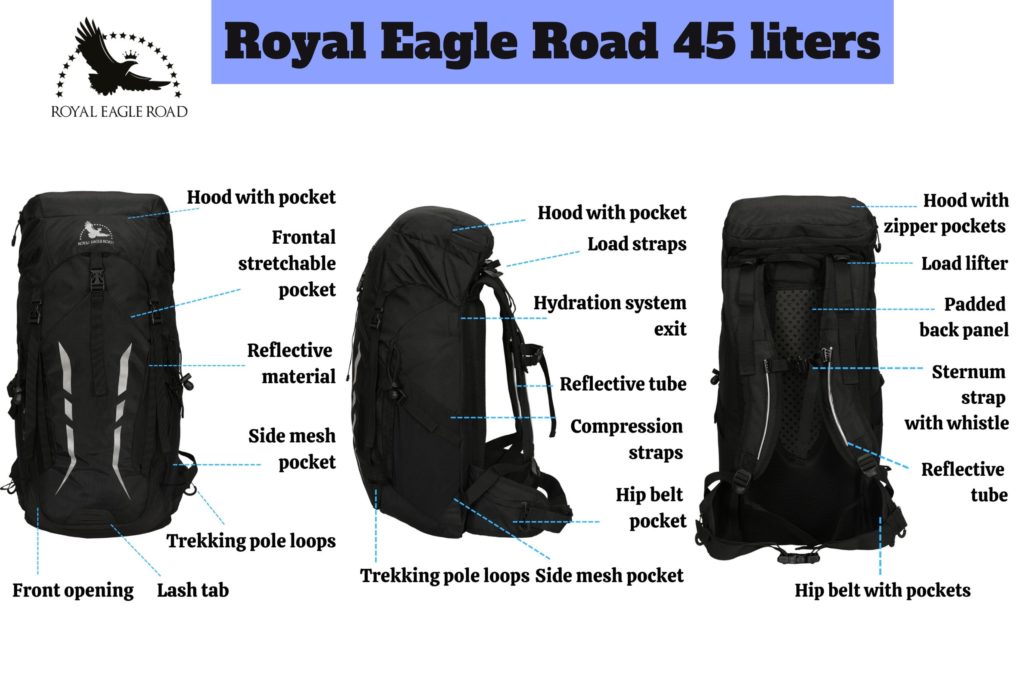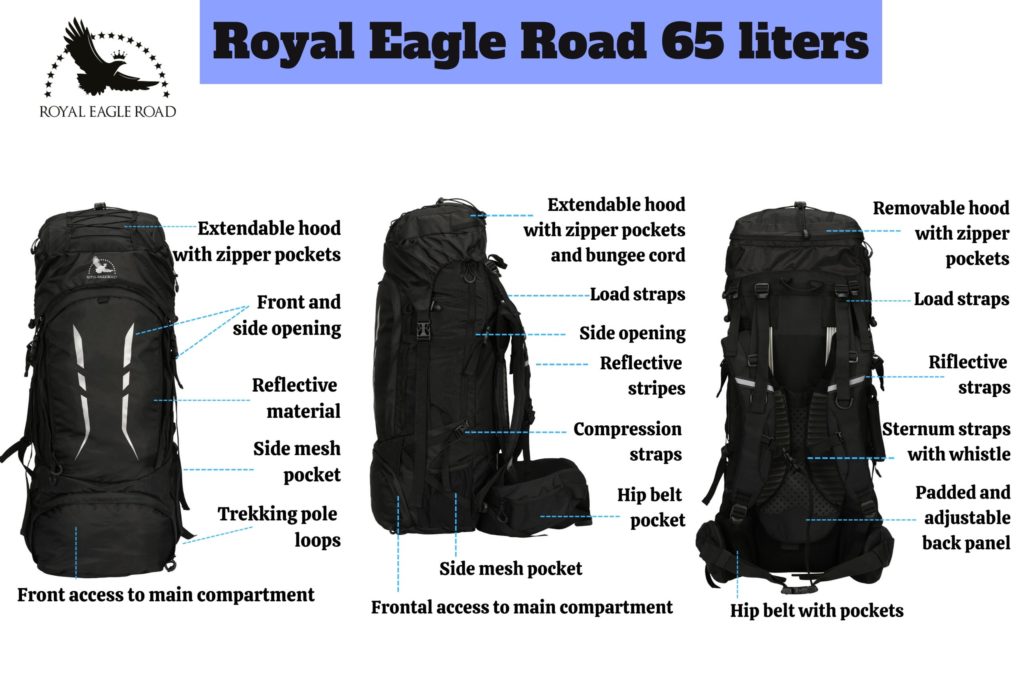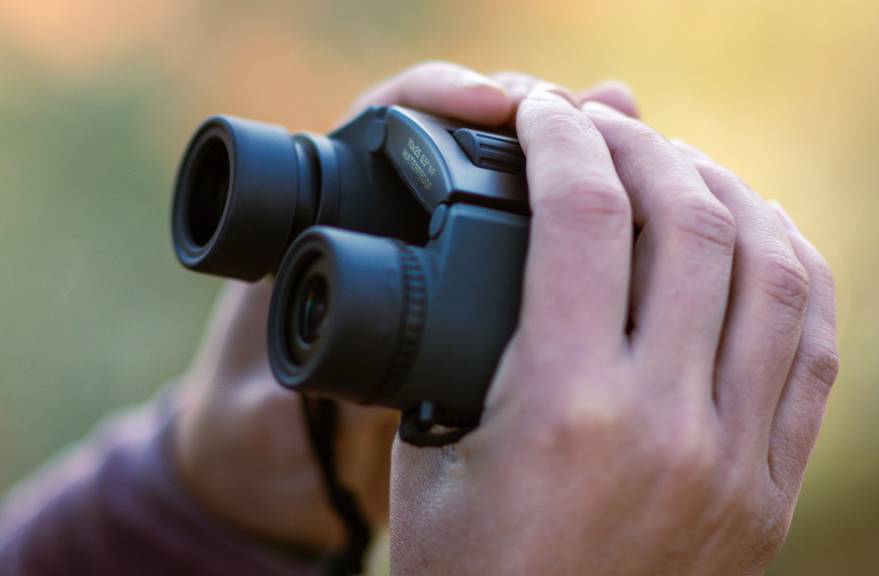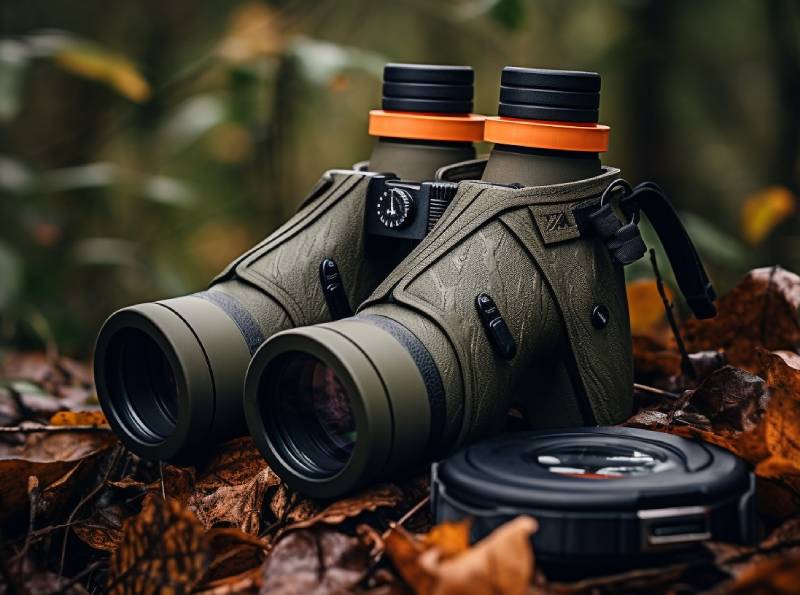 Reading time: 15 minutes
Reading time: 15 minutesBackpacks are made up of different parts that differentiate one model from another. We talked in detail in the article “How to choose a backpack“.
In this post, we propose a glossary to help (not only beginners) to identify closely all the parts of a backpack.
Article content
What are the parts of a trekking backpack called and what are they needed for?
BACKPACK STRAPS
Straps are pieces of woven fabric that bring together different parts of the backpack. Depending on the straps’ position and their functions, they take different names. Read our guide “How to adjust the backpack straps“.
LOAD LIFTER / STABILIZER STRAPS
The load lifters, also known as stabilizer straps, are positioned above the shoulder straps. You can fit them to place the backpack in a correct position, keep it closed to your back and adjust the load on your shoulders.
The load lifters are key parts of large hiking backpacks because they regulate the pressure on the shoulders according to the slope of the terrain.
If the path is uphill, we recommend tightening the load liftersto keep the backpack close to the body and ensure greater stability. If the path is downhill, we recommend loosening slightly the straps to balance the forward movement.
COMPRESSION STRAPS
The compression straps are generally located on the sides of the backpack. They compress or expand the pack’s size and prevent the load from moving when the backpack is not fully loaded. A correct weight distribution reduces the load on the shoulder with the result of a more comfortable carry and a better balance.
STERNUM STRAP / CHEST STRAP
The chest straps prevent the shoulder straps from sliding outward during movement. They are very useful for travel and trekking backpacks as they ensure comfort and stabilize weight. Some chest straps include whistle (as in our Santiago 45 liter and Himalaya 65 liter) that could end up being useful during group excursions.
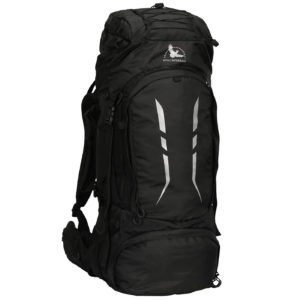
WAIST STRAP / HIP BELT
Padded and adjustable, the hip belt is created to anchor the backpack to the back and distribute the weight along the waist, lightening the shoulders. The hip belt stabilizes the weight towards the center of gravity of the body (the navel), improving balance and preventing the backpack from swinging during movements. It is particularly useful in trekking and travel backpacksto carry heavy loads more comfortably.
Generally, there are also pockets on the lumbar belt to keep small items handy. The correct adjustment of the belt is essential. If too slow, the weight of the backpack will be completely on the shoulders. If fastened too tightly, the belt will restrict the movements.
EQUIPMENT LOOPS AND HOOK
GEAR LOOP
Hiking and trekking backpacks are equipped with external loops to attach trekking poles, crampons, tents and other equipment. Generally, the backpacks have an elastic band upwards and a ribbon buttonhole sewn at the bottom to hook the equipment on two points, as our Himalaya 65-liter. Buttonholes can also be used to attach the helmet holder.
LASH TAB
The lash tab (also called pig’s snout because of its shape) is a small square with two slits that we often find in hiking backpacks. It is designed to hang carabiners, ropes or tie the material when the backpack has no space left. As an alternative to the leather version, they can also be made of plastic or rubber to last longer and be water-resistant.
D RING
The D-ring can be found on the shoulder straps, close to the chest and is used to hang small objects such as carabiners, keys or ropes. If you carry also a hydration system, the tube can pass inside the D-ring to stay still during movements.
BUNGEE CORD
Some backpacks include an elastic bungee cord sewn outside to carry equipment that does not fit into the backpack during excursions such as a rope, a mat or a helmet. They can also be used to let anoraks, sweatshirts or clothes dry while walking. Our Brigante 28 liter daypack includes a frontal bungee cord while in Himalaya 65 liter it is provided on the lid.
ZIPPER AND ZIPPER PULLER
The zipper is the metal piece that allows you to open and close the compartment of the backpack. The zipper puller is the part of the zipper that you grab when opening and closing the zipper teeth. It can have a plastic-coated cord that guarantees easy opening even when wearing gloves.
FRAME
The internal frame of the backpack is the aluminum stays (and in some cases of hard plastic) inserted under the back panel padding. They are common in large backpacks as they ensure air circulation and the back does not adhere directly to the back panel but remains slightly detached.
LUMBAR PAD
The lumbar pad is the padded support for the lower back and helps to keep it straight, protect it and absorb the weight. See “lumbar belt”.
DAISY CHAIN
The daisy chain is one of the parts of the backpack common in mountaineering and outdoors. It is a type of nylon tape sewn on the backpack that forms loops to attach carabiners, clips, accessories or equipment.
BUCKLES AND REGULATORS
Buckles are hard components that close together and can be of plastic, metal or aluminum. They are used to fasten the chest straps, compression straps, hip belt and also the backpack hood. The regulators are the plastic parts to adjust the length of the belt.
HAUL HANDLE
The handle is located at the top, in our Himalaya 65 liter it is also present in the lateral side. Besides lifting the backpack, the handle can be useful for pulling up hikers in difficult situations. In the case of our Himalaya 65 liter, the side handle allows you to lift the backpack even in a horizontal position, for example on the baggage claim belt at the airport.
PADDED SHOULDER STRAPS
The shoulder strapsdistribute the weight on both shoulders, the padding and the width are key features to cushion the load. In most cases, you can adapt the shoulder straps to your body shape. Some shoulder straps have loops or D-rings for positioning the hydration tube. In our Himalaya 65 liter, the reflective material covers the loops on the shoulder straps.
REFLECTIVE STRIPS
Some backpacks have strips made of reflective material that allow greater visibility and safety when walking on the street or in poorly lit places. All our backpacks have reflective stripes and logo.
COMPARTMENTS AND POCKETS
Even if the same capacity, not all backpacks are the same and they can be divided in a different way inside.
INNER DIVISOR
In large-capacity backpacks, the inner divisor is essential to separate the main compartment into two areas: an upper compartment and a lower one. It is important to divide the content according to weight and utility. Both areas need to be accessible from the outside without taking out everything when looking for something at the bottom. In our Himalaya 65 liter backpack, the inner divisor is extendable through a drawcord so as to divide the main compartment into two parts when necessary.
BACK PANEL
Most backpacks have a padded backrest to give back comfort and cushion the weight. A common feature of large backpacks is that they include a hard steel frame inside to support the backrest and a ventilation systemto ensure air circulation. There are different types of back systems, the most common are ventilation channels and breathable mesh.
MAIN COMPARTMENT
The main compartment is the largest space inside a backpack for storing the contents. Through a zipper positioned outside and according to the shape of the backpack, you can access the main compartment from the upper, frontal and side openings. This guide explains the different openings.
SHOE COMPARTMENT
The shoe compartment is common in sports backpacks to separate wet clothes or shoes from the rest of the contents while in trekking backpacks, you can store them on the bottom. Thanks to the extendable divisor, it is possible to obtain a special space for shoes only when needed, without sacrificing the volume inside the main compartment.
SLEEPING BAG COMPARTMENT
Usually, lightweight objects such as the sleeping bag are placed in thelower compartment of the backpack to better balance the weight and form a stable base for all the rest of the content.
HYDRATION SYSTEM POCKET AND EXIT
Hiking backpacks are often compatible with the hydration system.
The hydration bag is useful during long walks, you can place it in the internal pocket and use the side exit to take out the tube.
SIDE POCKETS
Designed to store water bottles, umbrellas or snacks, the side pockets are easily accessible even on the move, without taking off the backpack from the shoulders.
KANGAROO POCKET / FRONTAL ELASTIC POCKET
The pockets can be in mesh or in stretch fabric. In our Santiago 45 liter backpack the stretchable front pocket adapts to the content stored inside.
LID POCKET
The lid has easily accessible external and internal pockets. The external pocket is easily accessible even by those who are behind the hiker. It is useful for handy objects such as handkerchiefs, compasses, maps and more. On the contrary, to keep your wallet and documents safe and not reachable from the outside, the internal pocket provides more space but you need to open the backpack. Some lids have an elastic bungee cord to hang anoraks or lightweight clothing, as in our Himalaya 65 liter backpack.
ACCESSORIES
WATERPROOF RAIN COVER
Rain cover is essential to keep the backpack and its contents dry. You can find it in the appropriate pocket, as in our Santiago 45 and Himalaya 65 liter backpacks, or buy it separately. The rain cover can also wrap the backpack and the attached equipment. It prevents getting caught between branches and shrubs during excursions.
HYDRATION BAG
The hydration bag can be useful for excursions and trekking. Thanks to the tube that comes out of the hydration exit and ensures an easy grip, you don’t need to use your hands to drink. It fits into the dedicated compartment and the shape adapts to your back.
Now that you know all the parts of the backpack, take a look at our Brigante 28, Santiago 45, Himalaya 65 models.
Shipping in Europe.
Posts you may like:

